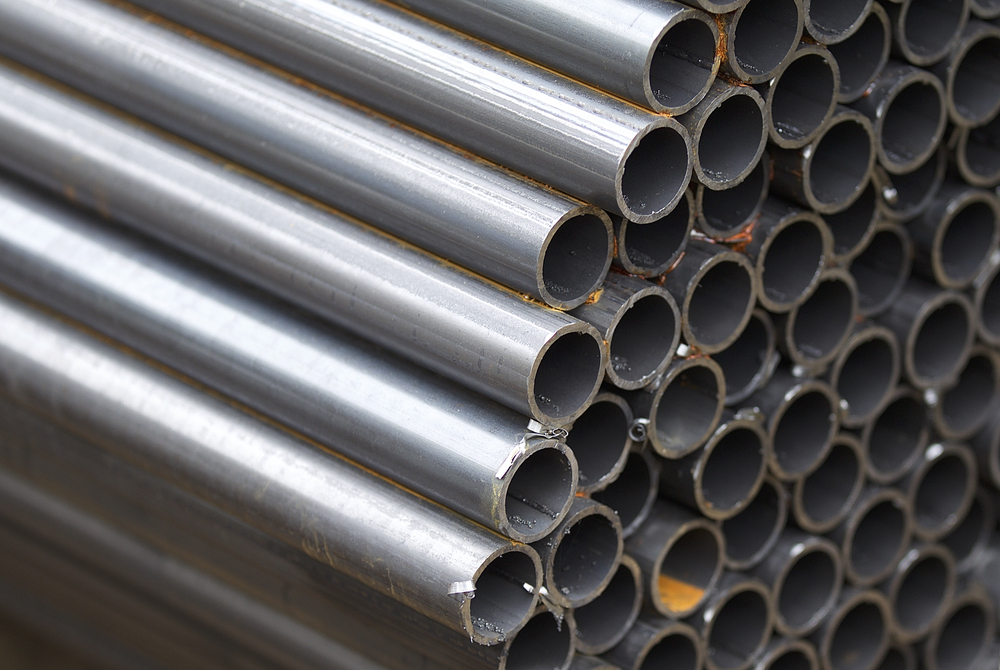1-Steel Pipe Prices in Pakistan: Mastering the Dynamics and Positive Trends
Steel constitutes a crucial commodity forming the backbone for infrastructure and industrial growth in Pakistan. With extensive applications across construction, machinery, automobiles, engineering sectors, etc. steel usage trajectory aligns closely with overall economic development. For end-users procuring steel pipes as vital raw material, price instability and opacity around pricing mechanisms create planning challenges. This article analyses the drivers shaping Pakistan’s complex steel pipe pricing dynamics and the factors that determine the Steel pipe prices in Pakistan.
2-Key Steel Price Influencers in Pakistan:
As a commodity traded actively in spot and futures markets globally, steel pricing depends on demand-supply macroeconomics. Additionally, domestic factors also induce volatility and determine steel pipe prices in Pakistan.
Global Market Movements
As Pakistan imports nearly 30% of steel to bridge the local demand-supply gap, international price movements influence domestic steel rates. Global cues including China’s industrial policies, iron ore availability, shipping freights, etc. impact imported steel landed prices thereby affecting domestic steel price equilibrium.
Domestic Demand Fluctuations
Cyclical business cycles across user industries like construction, machinery, etc dictate short-term demand swings for steel pipes thereby impacting prices. Further, large government infrastructure projects when commissioned also spike steel consumption. Such demand peaks against limited supply availability resulting in an increase in steel pipe prices in Pakistan.
Input Material Constraints
Steel pipe prices in Pakistan’s production rely majorly on steel billets, ingots, and scrap as key inputs whose costs vary. Supply shortages of billets due to reliance on imports or high scrap prices make steel pipe production expensive translating into rate hikes. Constraints in coking coal for steel plants also feed into upward bias.

Electricity and gas fuels power steel manufacturing. Pakistan’s energy import dependence makes fuel pricing vulnerable to exchange rate risks and global oil prices. Higher utility costs for steel makers cascade into increased finished steel pipe rates. Surcharges also apply for abrupt energy price spikes.
Logistical Impediments
Inadequate port and inland freight infrastructure lead to higher steel transportation expenses from manufacturing clusters like Karachi to demand pockets in Islamabad or Gilgit. Such overheads manifest into price premiums for buyers located deeper inland off main logistic arteries.
3-Pricing Methods and Purchase Considerations:
Transaction mechanisms and product traits also guide steel pipe prices in Pakistan. Understanding the dynamics empowers buyers during procurement budgeting and negotiations.
Pricing Basis
Steel pipe prices in Pakistan involve metric tonnage rates based on dimensions like diameter, wall thickness, length, etc. However, for bulk procurement from pipe mills, rate discovery occurs through competitive bidding or fixed Window Contracts. Spot buys from distributor networks also attract dealer margins. Requirement criticality, order size, and delivery timelines influence price bargains.
Product Specification Variances
Steel grade (chemical composition), strength and tolerance thresholds, testing standards), and value additions like coating, heat treatment, etc. entail pricing premiums for enhanced steel pipe properties. Compromising on quality thresholds lowers price but impacts life span.
Demand Rush Orders
Spot purchases to meet urgent project requirements usually witness inflated pricing dynamics compared to scheduled delivery procurement through long-term agreements with pipe manufacturers. Planning aids in better rate negotiations.
Seasonality Fluctuations
Weather-triggered demand changes affect steel pipe rates. Monsoon slowdown in construction temporarily softens market rates. Such seasonal factors guide the best window for purchase.
4-Impact on User Industry Economics:
While price uncertainties stress procurers’ budgets, steel’s amplifying role across downstream sectors offers to remedy alternatives through prudent demand management and substitution strategies.
Construction Sector
Real estate developers can explore greater adoption of pre-fabricated steel structural modules to stabilize project costs against input material inflation. Enhanced focus on recycling steel construction debris also abates price volatility risks over the long term.
Automotive Sector
Automobile firms use precision steel tubes across chassis, gearboxes, etc. Exploring higher-grade steel varieties like micro-alloy steel helps lower production costs through potential weight reduction and machining ease for vehicle fuel efficiency and performance gains to better absorb steel price inflation.
Agriculture Sector
Steel pipe prices in Pakistan find usage across irrigation equipment, storage silos, etc in agriculture. Increased impetus on pipe standardization and modularization helps farmers mitigate price risks. Better water management through steel pipes also improves crop yields, offsetting steel inflation.
5-The Road Ahead of steel pipe prices in Pakistan
To summarize, steel pipe prices in Pakistan dynamics involve global factors like commodity cycles and domestic aspects like energy costs and supply-demand stability. User industries can deploy prudent demand scheduling and steel substitution efforts along with national-level policies addressing infrastructure and trade constraints to steady price volatility. Such multi-dimensional efforts to stabilize steel availability and inventory cycles can streamline budgeting and aid sectoral competitiveness against materials inflation.

Steel pipe prices in Pakistan involve a complex interplay of international cues, domestic manufacturing economics, and market equilibrium considerations across supply chain stakeholders. While fluctuations remain inevitable given the commodity nature of the product, constructive efforts on suitable substitutions to avoid over-reliance along with government policies addressing infrastructural and trade barriers can potentially offset demand-supply mismatches.
Users too can deploy procurement tools like quarterly averaging, volume bundling, long-term contracts, etc. to navigate pricing pressures. Overall, collaborative strategies across manufacturers, end-user sectors, and policymakers focused on stabilizing Pakistan’s steel value chain and self-sufficiency are vital for insulating the interests of the economy.
6-Frequently Asked Questions:
What causes frequent steel pipe prices changes in Pakistan?
Major factors include global commodity price movements, domestic demand-supply gaps amplified by infrastructure projects, power and freight costs, and supply bottlenecks for critical inputs like iron ore and scrap metal.
Which industries rely the most on steel pipe prices in Pakistan?
Construction, infrastructure building, oil and gas lines, automotive manufacturing, mechanized agriculture, and urban water supply sectors are the largest consumers of manufactured steel pipes in Pakistan.
How can user industries mitigate steel price risks?
Strategies include demand planning for long-term contracts, using steel alternatives like composites, increasing recycled steel usage, collaborating on vendor-managed inventory, etc. to stabilize procurement budgets against commodity volatility.
Which steel pipe grades have maximum price stability?
Commoditized products like circular hollow sections used in construction provide relatively more price stability owing to higher turnover and lower input metal purity requirements compared to specialized precision steel tubes used by engineering industries.

We have the best quality steel pipes. and we hope you have the best experience if you take our products.
© 2024 Mehboob Steel Traders. All rights reserved.
